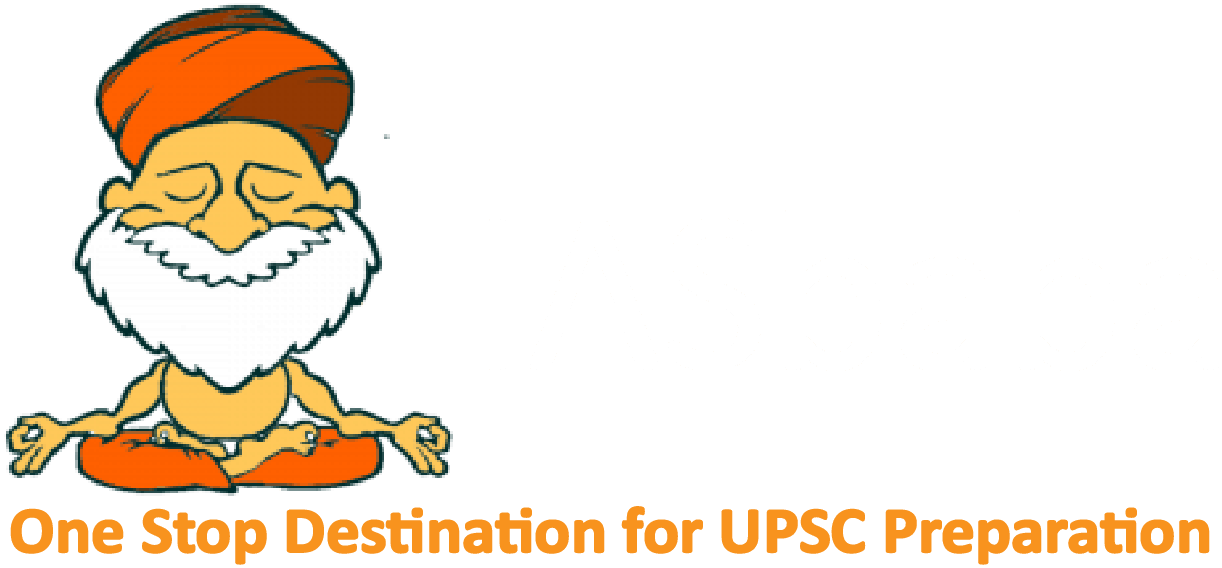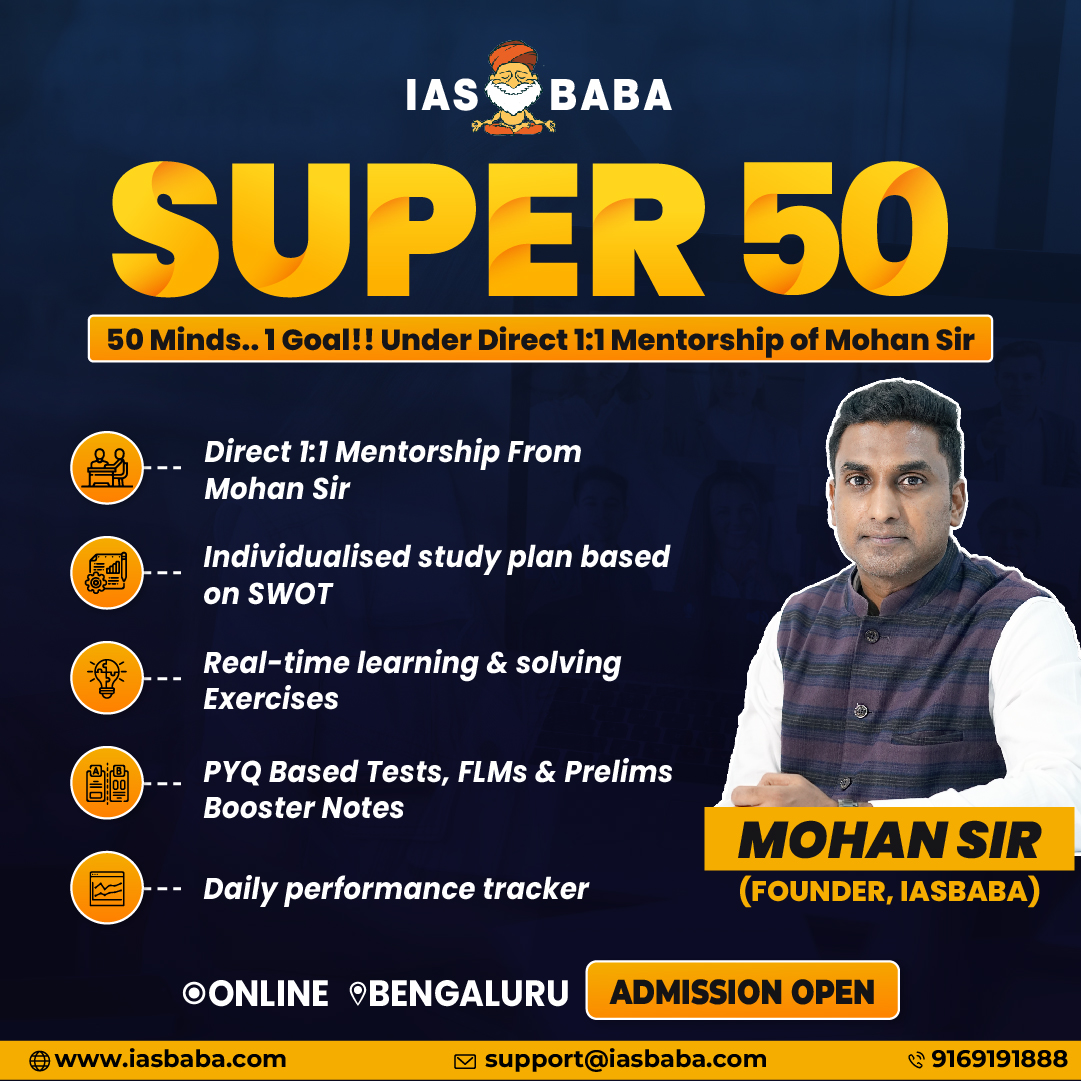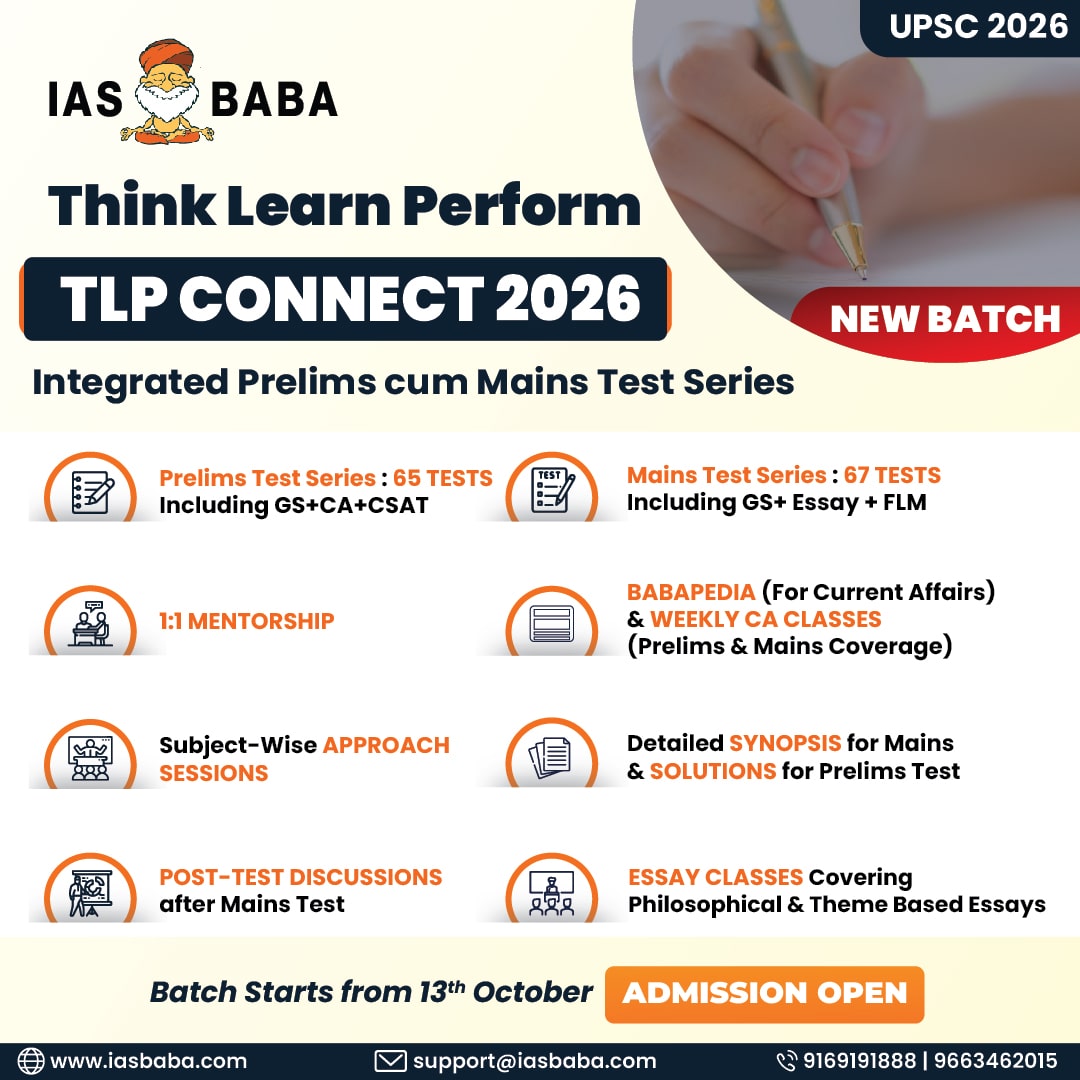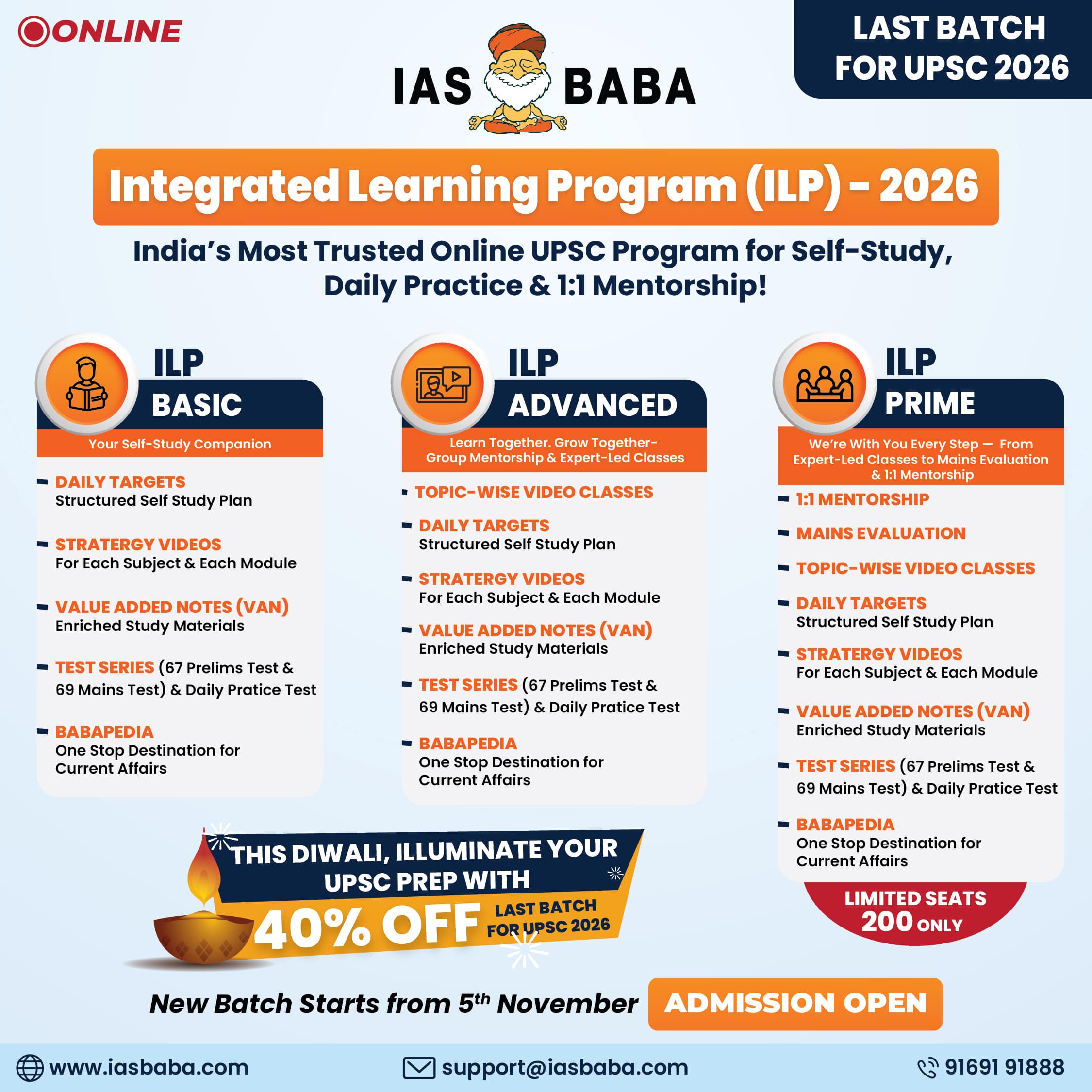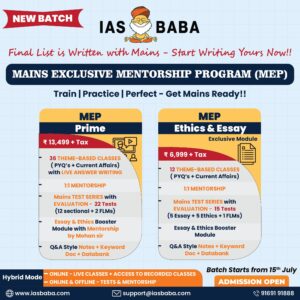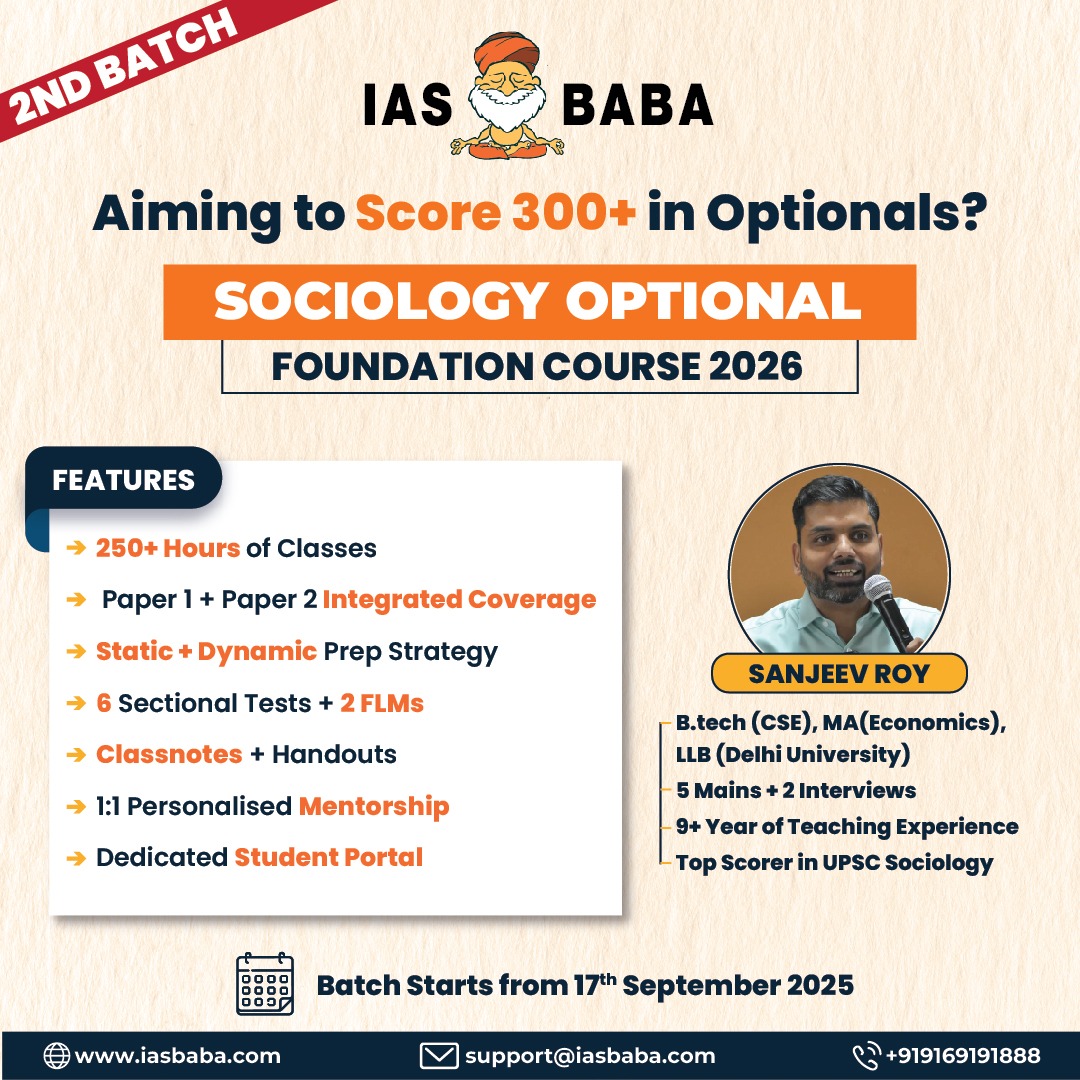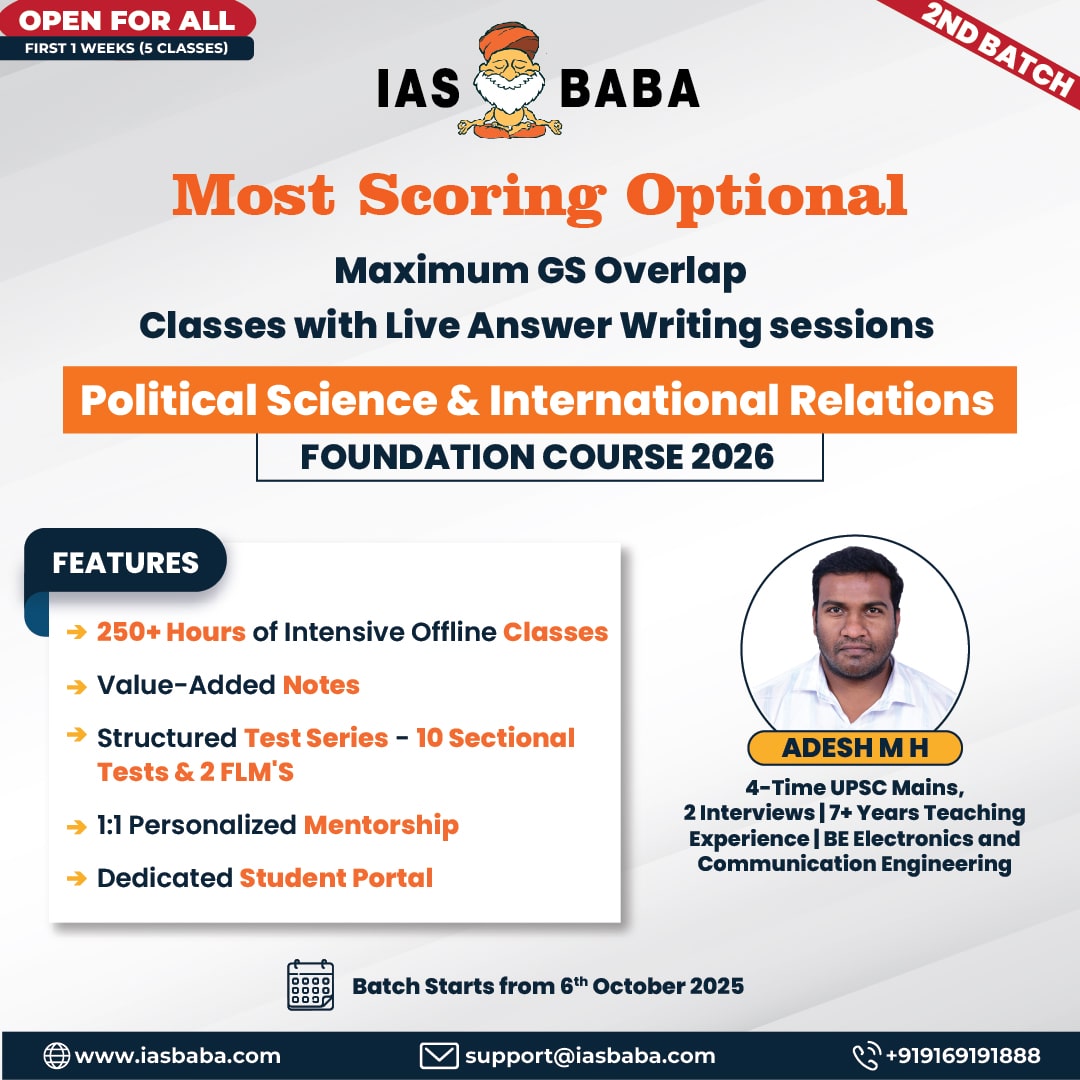IASbaba's Daily Current Affairs Analysis
rchives
(PRELIMS Focus)
Category: POLITY
Context: Several beaches in Spain were closed after the arrival of blue dragons (Glaucus atlanticus)
Several beaches in Spain were closed after the arrival of blue dragons (Glaucus atlanticus), small but venomous sea slugs capable of delivering extremely painful stings. These creatures float upside down on the ocean surface, feeding on venomous jellyfish and incorporating their toxins for defense. Rarely seen in the Mediterranean, their sudden presence surprised scientists and locals. Stings can cause pain, swelling, nausea, and vomiting, though not usually fatal. Their appearance is linked to shifting water currents and marine anomalies, possibly driven by climate change.
Learning Corner:
Blue Dragon (Glaucus atlanticus)
- A small but strikingly blue sea slug (nudibranch) found in warm ocean waters.
- Floats upside down on the water surface using a gas-filled sac in its stomach.
- Feeds mainly on venomous organisms like Portuguese man o’ war and jellyfish, storing their stinging cells (nematocysts) in its own tissues.
- This ability makes its sting extremely painful, causing swelling, nausea, and vomiting, though not usually fatal.
- Rarely seen in the Mediterranean; presence there is linked to shifting water currents and climate change.
- Considered an indicator of marine ecological anomalies.
Source: THE INDIAN EXPRESS
Category: ENVIRONMENT
Context : APK scams are a fast-growing cybercrime in India where fraudsters spread fake Android Package Kit (.APK) files disguised as official apps to steal sensitive personal and financial data.
Victims are lured through calls or messages about blocked bank accounts or subsidies and tricked into downloading malicious apps. Once installed, these apps capture OTPs, banking details, and contacts in real time, enabling immediate fund theft.
They are traded on underground platforms, and stolen data is decoded for fraudulent transactions. These apps often self-delete after theft, making tracking difficult. Authorities are countering the menace by tracing digital trails, coordinating with banks and telecom operators, and raising public awareness, but losses remain significant due to the scams’ scale and sophistication.
Different types of cybercrime:
- Phishing & Smishing – Fraudulent emails or SMS messages trick users into revealing personal/banking details.
- Malware Attacks – Malicious software (viruses, trojans, ransomware, spyware) used to steal data, disrupt systems, or extort money.
- Ransomware – Encrypts a victim’s files and demands ransom for decryption.
- Identity Theft – Stealing personal information (like Aadhaar, PAN, bank details) to commit fraud.
- Financial Frauds – Online banking frauds, UPI scams, fake investment schemes, and APK-based fraud apps.
- Cyberstalking & Online Harassment – Using digital platforms to stalk, threaten, or harass individuals.
- Hacking & Data Breaches – Unauthorized access to systems or databases to steal sensitive data.
- Denial of Service (DoS/DDoS) Attacks – Overloading a network/server to make it unavailable.
- Online Child Exploitation – Circulation of child sexual abuse material (CSAM) and grooming.
- Intellectual Property Theft – Piracy, software cracking, or stealing trade secrets.
- Cyber Terrorism – Attacks on critical infrastructure, government systems, or spreading extremist propaganda online.
- Cryptocurrency & Dark Web Crimes – Illegal trading, money laundering, and transactions through untraceable crypto wallets.
Source: THE HINDU
Category: INTERNATIONAL
Context: The Supreme Court has asked the government for a status update on restoring statehood to Jammu and Kashmir.
The Supreme Court has asked the government for a status update on restoring statehood to Jammu and Kashmir, emphasizing that its prolonged absence affects citizens’ rights and undermines India’s federal principles. The Constitution allows for admission, establishment, and formation of states, as seen in J&K’s reorganization in 2019. While upholding the abrogation of Articles 370 and 35A, the Court directed statehood restoration and noted that the last Assembly elections were held in October 2024. Restoring statehood is seen as crucial to uphold constitutional values, equitable resource sharing, and the federal balance.
Learning Corner:
Constitutional provisions of state creation in India:
- Article 1: India is a “Union of States.” This emphasizes indestructibility of the Union but not of individual states.
- Article 2: Parliament may admit new states into the Union or establish new states. Example: Sikkim admitted in 1975.
- Article 3: Parliament has the power to form a new state by separation of territory, uniting two or more states/UTs, or altering boundaries/names of existing states. Example: Telangana created in 2014.
- Procedure under Article 3:
- President refers the proposal to the concerned State Legislature for its views.
- However, the State Legislature’s opinion is not binding on Parliament.
- Article 4: Laws made under Articles 2 and 3 are not considered constitutional amendments under Article 368.
- Significance: Ensures flexibility for reorganization of states to accommodate linguistic, cultural, administrative, or political demands while maintaining the Union’s integrity.
Source: THE HINDU
Category: POLITY
Context: This can be directly asked in prelims
Research on coral microatolls—sensitive to the lowest tides—provides a continuous record of sea-level changes since 1959, refining projections and highlighting the urgent need for local monitoring and adaptation strategies. These findings are crucial for protecting coral reefs, island nations, and regional stability against climate risks.
Learning Corner:
Coral Microatolls – Brief Note
- Definition: Coral microatolls are disk-shaped coral formations that grow outward rather than upward, as their vertical growth is restricted by the lowest tide levels.
- Unique Feature: Their flat, saucer-like tops record sea-level changes over time because they grow only within a narrow vertical range controlled by tidal variations.
- Scientific Importance: They act as natural tide gauges, providing long-term, continuous records of sea-level fluctuations spanning decades to centuries.
- Climate Studies: Used to reconstruct past sea levels and refine projections of future rise, especially critical for vulnerable low-lying islands.
- Conservation Relevance: Help monitor the impacts of climate change on marine ecosystems, coral reef health, and coastal communities.
Source: THE HINDU
Category: CULTURE
Context: Educate Girls, an Indian non-profit dedicated to enrolling unprivileged and out-of-school girls, has won the 2025 Ramon Magsaysay Award.
Founded in Rajasthan, the organization works in rural and remote areas to address gender injustice in education, ensuring girls remain in school until they secure credentials for higher studies or employment.
This is the first time an Indian organization has received the award for advancing girls’ education, highlighting its community-driven model. The other 2025 winners are Shaahina Ali of the Maldives and Flaviano Antonio L. Villanueva of the Philippines.
Learning Corner:
Ramon Magsaysay Award
- Established: 1957, in memory of Ramon Magsaysay, the 7th President of the Philippines, known for integrity and leadership.
- Presented by: Ramon Magsaysay Award Foundation (RMAF), Manila, Philippines.
- Objective: To honor individuals or organizations in Asia who demonstrate selfless service, transformative leadership, and commitment to the common good.
- Categories (originally): Government Service, Public Service, Community Leadership, Journalism/Literature/Creative Communication Arts, Peace and International Understanding, Emergent Leadership.
- Prestige: Often called the “Nobel Prize of Asia.”
Source: THE HINDU
(MAINS Focus)
Introduction (Context)
The Gangotri Glacier System (GGS), the source of the Bhagirathi River in the central Himalayas, is crucial for the upper Ganga basin.
Recent studies have investigated how climate change is affecting its snow and ice reserves, thereby altering the glacier-fed hydrological cycle.
What is glacier?
A glacier is a large, persistent body of ice that forms over centuries from accumulated snowfall and slowly flows under its own weight. Glaciers are found in high mountain regions and polar areas. They act as natural reservoirs of freshwater.
Significance of glacier
- Glaciers store about 69% of the world’s freshwater, releasing it gradually as meltwater.
- They regulate river flows, especially in summer and dry seasons, sustaining ecosystems and human use.
- Snow and ice melt from glaciers contribute to base flow in rivers, maintaining water availability when rainfall is low.
- Glaciers respond to temperature and precipitation changes, making them important indicators of climate change.
About Gangotri Glacier System (GGS)
- Gangotri Glacier is located in Uttarakhand, Himalayas and is the source of the Bhagirathi river, a major tributary of the Ganga.
- The GGS is composed of four main glaciers: Meru (7 km²), Raktavaran (30 km²), Chaturangi (75 km²), and Gangotri (140 km²).
- Receives precipitation from Western Disturbances in winter (Oct–Apr) and Indian Summer Monsoon in summer (May–Sep).
- Summer precipitation is the primary driver of annual discharge, followed by winter temperature.
Key Findings of the Recent Study
- The report shows that the Gangotri Glacier System (GGS) is still largely fed by snowmelt, which contributes 64% of the total water flow each year over the past forty years.
- The total water flowing from GGS comes from several sources:
- Snowmelt: Water that comes from melting seasonal snow deposited during winter. It usually melts in the summer months, feeding rivers like the Bhagirathi. Snowmelt dominates the river flow, especially in glacier-fed rivers, because it releases large amounts of water over a short period.
- Glacier melt: Water that comes from the permanent ice of glaciers, which melts slowly over time. This is smaller than snowmelt (21%) because glaciers melt gradually and continuously, even outside the summer months.
- Rainfall-runoff: Water that comes directly from rainfall, which flows over the land into rivers. It contributes 11% to the total flow and is especially important during the monsoon season.
- Base flow: The part of river flow that comes from groundwater or springs, maintaining river levels even when there is no rain or snow melt. It contributes about 4% of the flow.
- The study also shows a decline in snowmelt’s share over time: In 1980–1990, snowmelt contributed 73% of total annual river flow, by 2010–2020, this dropped to 63%.
- This indicates that less snow is accumulating or remaining over time, likely due to climate change, so the river is increasingly relying on glacier melt, rainfall, and groundwater.
- Water coming from rainfall and underground sources has increased over time, suggesting that the glacier system is being affected by warming-induced hydrological changes, where more rain and groundwater contribute to river flow.
Implications of the Study
- Increasing rainfall-runoff and base flow indicate warming-induced hydrological changes.
- Recent intense summer monsoons in North India have caused frequent floods in Uttarakhand, Himachal Pradesh, and Jammu, sometimes “cloudbursts.”
- Continuous field monitoring and modeling are critical for water resource management in glacier-fed river basins.
Conclusion
Climate change is accelerating early snow melt in the Gangotri Glacier System, altering seasonal discharge patterns and increasing the contribution of rainfall-runoff and base flow.
This has direct implications for water management and flood preparedness in the upper Ganga basin, emphasizing the need for sustained monitoring and scientific assessments.
Mains Practice Question
Q How is climate change affecting the Gangotri Glacier System and its hydrological cycle? Discuss the implications for water resource management in the upper Ganga basin. (250 words, 15 marks)
Source: Is the Gangotri glacier losing snow earlier than usual? – The Hindu
Introduction (Context)
India’s growth story has always been powered by its Shram Shakti (labour power). The economy rose from the 10th largest in 2014 to the 4th largest by 2025, with human capital playing a central role.
With nearly 65% of the population under 35 years, India holds one of the world’s most significant demographic dividends. However, without adequate jobs, skills, and social security, this dividend risks turning into a liability.
How growth fuelled employment
- India rose from the 10th largest economy in 2014 to the 4th largest in 2025, showcasing strong growth momentum.
- According to RBI-KLEMS, while only 2.9 crore jobs were created between 2004-2014, over 17 crore jobs were created in the decade that followed.
- EPFO data shows increased formalisation in the workforce.
- In 2015, only 19% of Indians were covered under at least one social protection scheme. By 2025, that number has surged to 64.3%, reaching 94 crore beneficiaries, making India the second-largest social security system in the world.
Yet, challenges such as Automation, Artificial Intelligence, and global supply-chain shifts are redefining the world of work. In such a backdrop, India must ensure that job creation is not only about numbers but also about quality, security, and dignity.
To address this, the government launched the Pradhan Mantri Viksit Bharat Rozgar Yojana (PMVBRY), a transformational step towards converting demographic potential into national prosperity.
About Pradhan Mantri Viksit Bharat Rozgar Yojana
- The PMVBRY has been designed to directly address this challenge by bridging the gap between youth aspirations and enterprise capacity. Unlike earlier schemes that targeted either workers or firms, PMVBRY adopts a dual-benefit model.
- For Workers (Part A): First-time employees receive up to ₹15,000 in two instalments, easing their entry into the formal labour market.
- For Employers (Part B): Enterprises are incentivised with ₹3,000 per new hire per month, reducing the risks and costs of expanding their workforce.
- Financial Incentive under Pradhan Mantri Viksit Bharat Rojgar Yojana will be disbursed in the aadhaar-linked bank account of the employee and the PAN Card-linked bank account of the employer.
- Additionally, the scheme prioritises the manufacturing sector, aligning with Make in India, PLI schemes, and Atmanirbhar Bharat goals — ensuring that job creation strengthens India’s industrial base.
The Pradhan Mantri Viksit Bharat Rozgar Yojana signals a shift from scheme-based interventions towards a comprehensive employment ecosystem.
Complements India’s larger vision of becoming a global manufacturing and digital hub.
Challenges
- Ensuring corruption free DBT delivery and monitoring compliance, especially in small enterprises.
- Employers may prioritise numbers to claim benefits without creating long-term opportunities.
- Youth must be adequately trained to adapt to AI and automation-driven workplaces.
- ₹1 lakh crore outlay requires efficient management to prevent leakages.
Steps needed
- Align youth training with emerging sectors such as AI, green energy, and advanced manufacturing.
- Use digital dashboards and real-time audits to ensure DBT reaches genuine beneficiaries and prevent misuse.
- Provide handholding support to small enterprises for onboarding and compliance so that benefits are not cornered only by large firms.
- Link incentives with job retention, skilling, and career progression to avoid short-term hiring practices.
- Coordinate with Skill India Mission, Start-up India, and PLI schemes to create a seamless employment ecosystem.
- Ensure participation of women, rural youth, and marginalised groups to broaden the benefits of employment generation.
Conclusion
The Pradhan Mantri Viksit Bharat Rozgar Yojana is more than a welfare scheme it is a nation-building instrument. By simultaneously targeting employability, enterprise competitiveness, and social security, it lays the foundation for a secure and productive workforce.
If implemented effectively, PMVBRY could transform India’s demographic dividend into a lasting public prosperity, driving the vision of a Viksit Bharat by 2047.
Mains Practice Question
Q The Pradhan Mantri Viksit Bharat Rozgar Yojana represents a shift from piecemeal job schemes to a comprehensive employment ecosystem. Analyse how it seeks to balance youth aspirations, enterprise competitiveness, and social security in India. (250 words, 15 marks)

